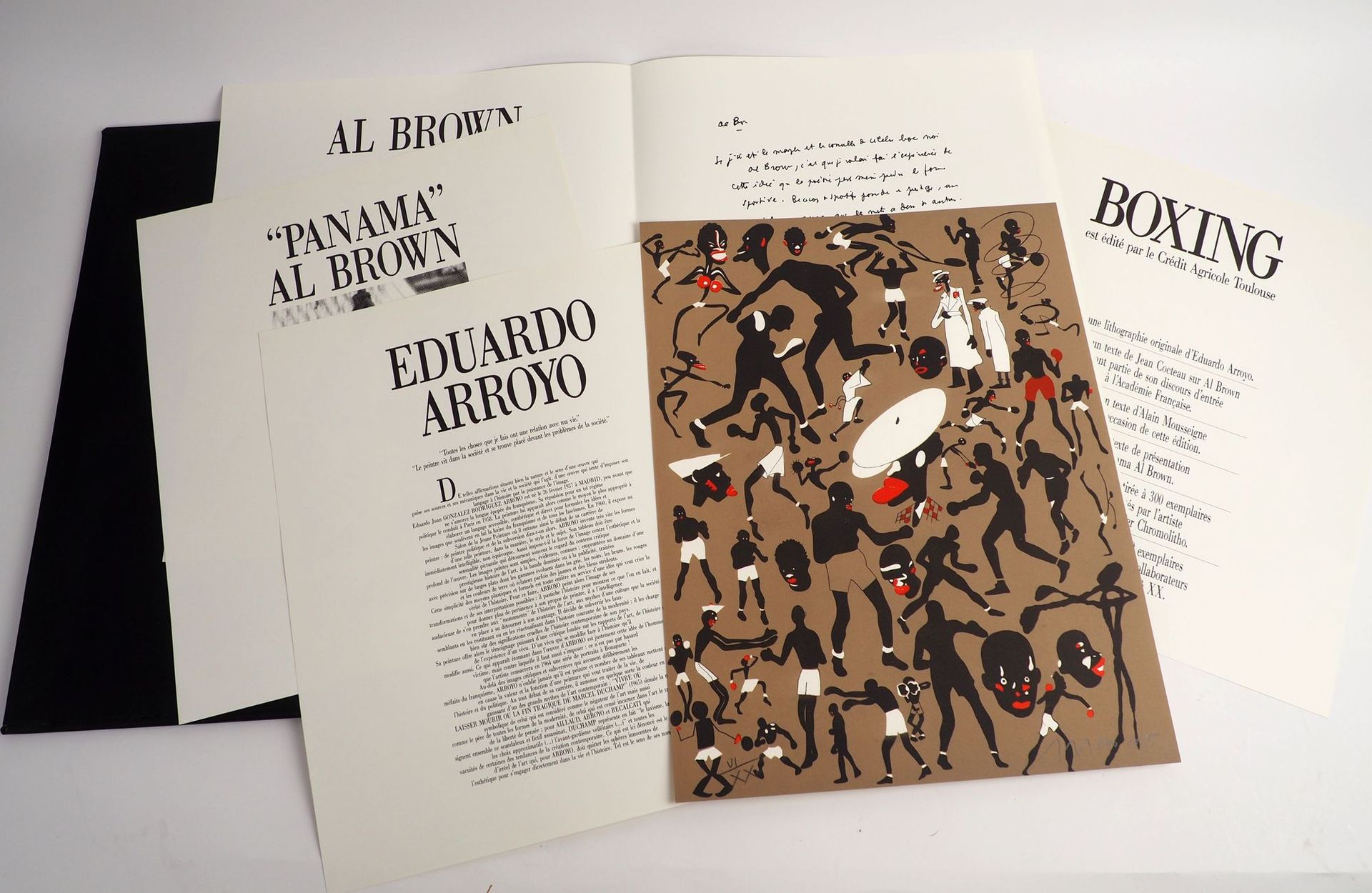Description
Boxing/Arroyo/Al Brown/Cocteau. Fabulous prestige booklet around Panama Al Brown (1902-1951). Under this big black plastic folder, signed with Arroyo's hand "Boxing Arroyo" hides a marvel. Edited by the Crédit Agricole of Toulouse, this fascicle "Cocteau" slipped under three flaps of protection, contains one of the most beautiful work devoted to a champion, indeed, are côtoient there a text of Jean Cocteau (typed on the left, handwritten on the right, 1889-1963)), which envelops a presentation of the champion of the world, because Panama Al Brown, it was it indeed, a pretty text of homage of M.Mousseigne to Eduardo ARROYO (1937-2018), and in the heart, a litho numbered. We have here, one of the twenty copies for the artist and his friends (the VI on XX, with pencil signature of Eduardo Arroyo, dated 1985, 45x35), this image pulled by moreover to 300 ex, is, it is necessary to say it, a summit in the tributes that the master of Madrid made to Al Brown. His book was brilliant and moving, and here he finally gives us the film in fifty images of the life of the phenomenon. On a beige background, the blacks, reds and whites sarabandent in an order that is both deliberate and dizzying, like a Gregorian page fallen from an incunabulum. Around the white cap, the game of a thousand legs unfolds, it jumps, boxes, and dances forever Panama. If the expression masterpiece means anything, we are not far from it. A touching dedication to a friend made in pencil by EA in 1988 would enhance this copy if needed. In its original box with address made by Eduardo himself.
39
Boxing/Arroyo/Al Brown/Cocteau. Fabulous prestige booklet around Panama Al Brown (1902-1951). Under this big black plastic folder, signed with Arroyo's hand "Boxing Arroyo" hides a marvel. Edited by the Crédit Agricole of Toulouse, this fascicle "Cocteau" slipped under three flaps of protection, contains one of the most beautiful work devoted to a champion, indeed, are côtoient there a text of Jean Cocteau (typed on the left, handwritten on the right, 1889-1963)), which envelops a presentation of the champion of the world, because Panama Al Brown, it was it indeed, a pretty text of homage of M.Mousseigne to Eduardo ARROYO (1937-2018), and in the heart, a litho numbered. We have here, one of the twenty copies for the artist and his friends (the VI on XX, with pencil signature of Eduardo Arroyo, dated 1985, 45x35), this image pulled by moreover to 300 ex, is, it is necessary to say it, a summit in the tributes that the master of Madrid made to Al Brown. His book was brilliant and moving, and here he finally gives us the film in fifty images of the life of the phenomenon. On a beige background, the blacks, reds and whites sarabandent in an order that is both deliberate and dizzying, like a Gregorian page fallen from an incunabulum. Around the white cap, the game of a thousand legs unfolds, it jumps, boxes, and dances forever Panama. If the expression masterpiece means anything, we are not far from it. A touching dedication to a friend made in pencil by EA in 1988 would enhance this copy if needed. In its original box with address made by Eduardo himself.
You may also like
